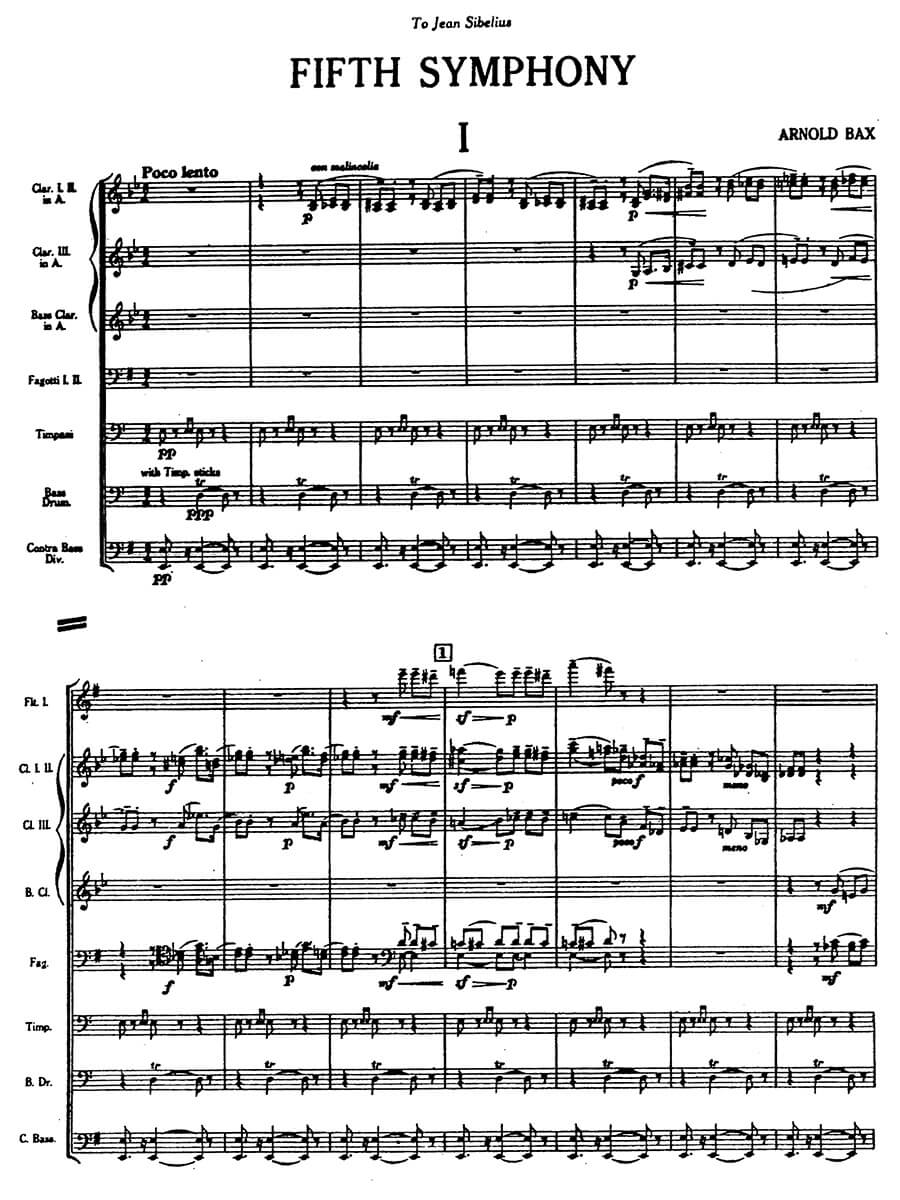Symphony No. 5
Bax, Arnold
38,00 €
Preface
Arnold Bax – Symphony No. 5
(b. Streatham/London, 8 November 1883 – d. Cork/Ireland, 3 October 1953)
(1932)
I Poco lento (p. 1) – Più mosso (p. 6) – Allegro con fuoco (p. 10) – Allegro giusto (p. 18) –
Dolce meno mosso (p. 24) – Più lento (p. 37) – Allegro con fuoco (p. 39) – Tempo giusto (p. 59) – Meno mosso (p. 61) – Moderato (p. 63) – Tempo primo. Poco lento (p. 65)
II Poco lento (p. 69) – Molto tranquillo (p. 80) – Tempo primo (p. 86) – Meno mosso (p. 91)
III Poco moderato (p. 97) – Allegro (p. 98) – Lento (p. 127) – Tempo primo. Allegro (p. 134) – Maestoso più lento (p. 140) – Poco largamente (p. 141) – Molto vivace – Brillante molto (p. 142) – Largamente (p. 143) – Doppio movimento alla breve (p. 144) – Più lento (p. 159)
Preface
Even at the time of his death, Arnold Bax was already largely forgotten, only to be rediscovered in the early 1970s (Lewis Foreman’s achievements must be particularly mentioned here). Bax studied at the same time as York Bowen, Benjamin Dale, Myra Hess, Montague Phillips, Paul Corder, Arthur Hinton, William Henry Reed and Harry Farjeon at the Royal Academy of Music with Frederick Corder and Alexander Mackenzie (the latter still had known Liszt personally), where he became a good pianist, but on the other hand felt an aversion to conducting his own works or conducting at all. Bax earned a high reputation, however, particularly in the area of orchestration. Robin Hull wrote in 1942: “The orchestration of Bax’s symphonies confirms previous evidence that his natural mastery and original handling of this medium belong to the foremost rank. His scoring, though apparently generous, rarely outweighs the material: few composers can handle large resources with such self-restraint and fine judgment. Bax’s musical substance requires for its expression many novel and fascinating relationships between instruments whose combined use has opened up immense possibilities in the field of orchestral writing. He yields nothing to the disastrous fallacy that originality may be attained by the pursuit of novelty per se; but both novelty and virtuosity are given their legitimate place. Illustrations of the composer’s felicity in revealing musical character through instrumental means are countless: it must suffice here to mention four. The rich and sombre tone of the viola (the first subjects of the slow movements in Nos. 3 and 5 respectively) is ideally suited to the veiled moods distinguishing many reflective passages in the symphonies; the clarinet (the opening bars of No. 5; also the main subject (with oboe) in the epilogue to No. 3) and cor anglais (the second subject of the slow movement in No. 5) are perfect exponents of that poignant lyricism in which Bax excels; and no one has appreciated more musically the extent to which the dark sonority of the trombones can express an atmosphere of menace and foreboding. (…) Such marvels of orchestration as occur in the symphonies are not external to, or in any way a substitute for, the essence of creative imagination: they communicate a wealth of original thought which itself justifies so profound an impression upon the receptive listener.” …
read more / weiterlesen … > HERE
Score Data
| Score Number | 4904 |
|---|---|
| Edition | Repertoire Explorer |
| Genre | Orchestra |
| Pages | 168 |
| Size | 210 x 297 mm |
| Printing | Reprint |
